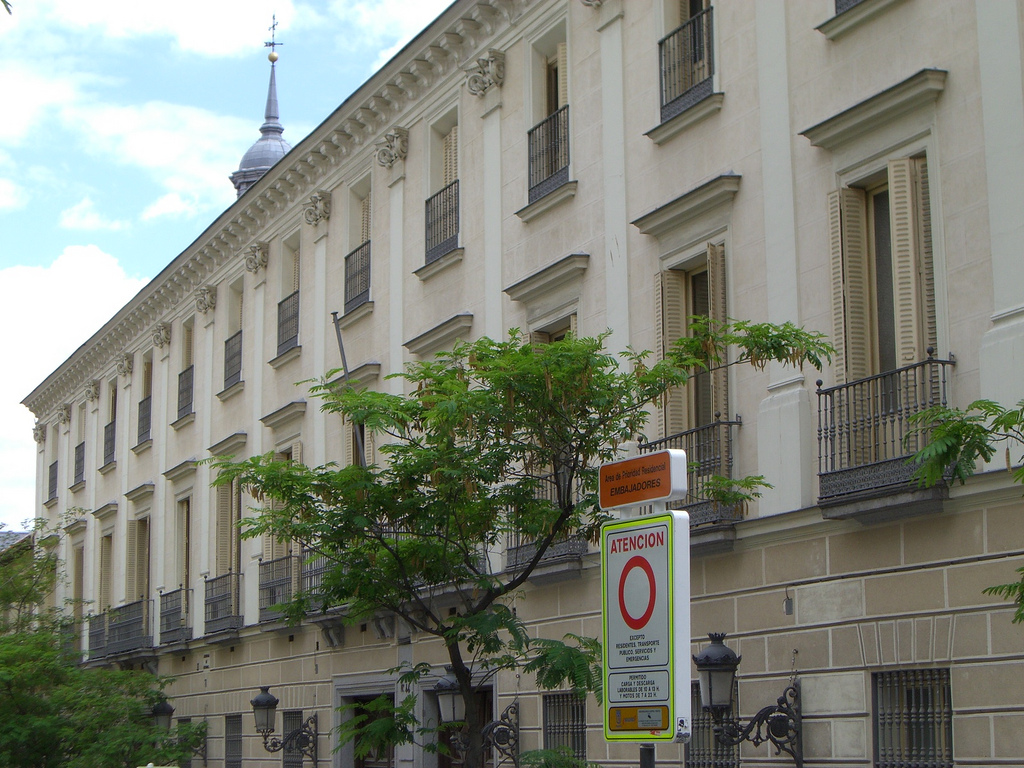Are you planning a trip to Madrid, Spain and seeking some fun and interesting ideas as to what to do and see during your visit? Do you have an interest in history and architecture, particularly architecture of the late 18th century and early 19th century? If you do, you may want to consider adding the Palacio de Fernán Núñez to your schedule of tour spots. To illustrate why the Palacio de Fernán Núñez is such an interesting site for history lovers, architectural buffs, and fans of mid-nineteenth century arts, below we have provided a brief overview of the palace, including some information about its history, location and many attractive features.
Palacio de Fernán Núñez
The Palacio de Fernán Núñez is one of the most popular and well-preserved nineteenth century buildings in all of Spain. The palace is situated in the well-traveled center of Madrid, very near the three museums that make up the city’s self-proclaimed “Golden Triangle of Art”: the Museo de Prado, Museo Thyssen and the Museo Reina Sofia.
The palace dates back to the year 1790, when the first Duke of Fernán Núñez commenced with its construction, employing a neoclassical style. Upon its completion in the late 1700s, the Palacio de Fernán Núñez served as the primary residence for the Duke and his wife, but upon their death in the mid 1800s, the Earl of Cervellon, husband to the daughter of the Duke of Fernán Núñez, began a full remodel of the structure, with an aim of transforming the palace into one of Madrid’s most brilliant residences. The facelift to the building lasted many years, with most of the work applied to the interior of the building. Today visitors to the Palacio de Fernán Núñez will relish in the contrasting styles of the two periods: a palace that on the exterior reflects the neoclassical style of the late 18th century and on the interior showcases the baroque romanticism theme so dominant in the middle of the nineteenth century.
The initial construction of the Palacio de Fernán Núñez was based on the design of the famous architect Antonio Lopez Aguado, and the remodel a few decades later was the work of his son, architect Martin Lopez Aguado, who expanded on his father’s neoclassical design and added features to the interior to reflect the current period. Many of the decorations and adornments of the palace were the work of the decorator Joaquin Edo del Castillo, a master in the fields of art and theatrical scenery.
The eye-catching simplicity of the Palacio de Fernán Núñez’ exterior gives no hint to the opulence and extravagance contained within. In fact, the interior of the palace, with the baroque style and richness of its ballrooms, reading rooms and studies, stands today as one of the most significant examples of the wealth and luxury afforded the Madrid aristocracy during the reign of Queen Isabella II. This is represented by the palace’s many precious frescos, sculptures, stuccos and silks, and the detailed beauty of its inlaid tile and glasswork.
Throughout the late 19th and early 20th century, the Palacio de Fernán Núñez was regularly used for social gatherings, grand parties, balls, concerts and literary events, some of which, at least in the early years, were attended by Queen Isabella II herself. In 1940 the palace was acquired by the Compañía de los Ferrocarriles del Oeste de España—the Railway Company of Western Spain—and in 1941 it became the headquarters for the Board of Directors of RENFE, following the full nationalization of the railway. Since 1985 the building has been the headquarters of Fundación de los Ferrocarriles Españoles, or the Spanish Railway Foundation.
For a small fee guests can tour the Palacio de Fernán Núñez, where they can explore the palace’s two main areas: the noble area and the service area. The noble section is by far the most well-preserved, a section rich with carpets and tapestries from the Royal Factory of Santa Barbara, replicas of cartoons by the famous painter Francisco Goya, crystal chandeliers, and silk, marble and bronze as far as the eye can see. Visitors can actually spend hours exploring the Palacio de Fernán Núñez and still not see all it has to offer, but while there, you should absolutely check out some of the more important areas, including the Patio Palace Receipt, with its majestic main staircase; Plaster Hall; the Hall of Lost Steps, the Ballroom, Elizabethan Hall and the main dining room, all with many of the same remarkable adornments and furniture of the original decorators.



